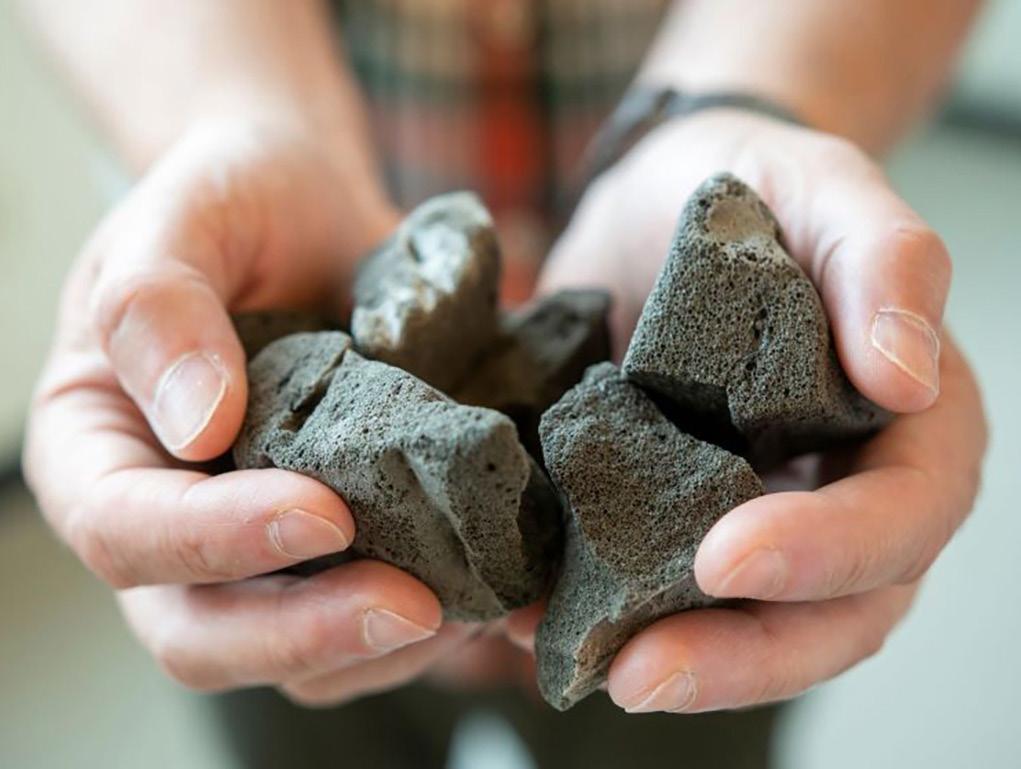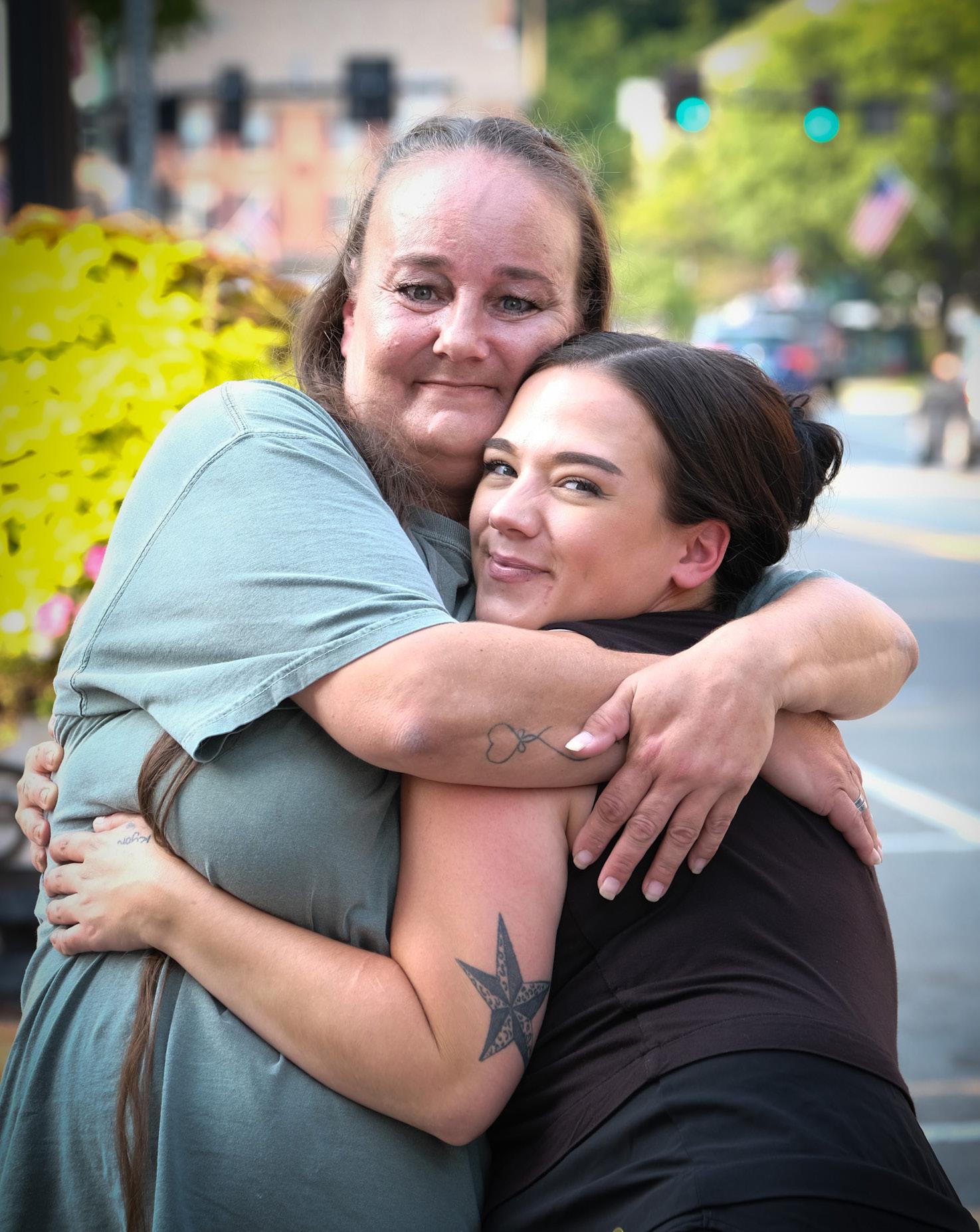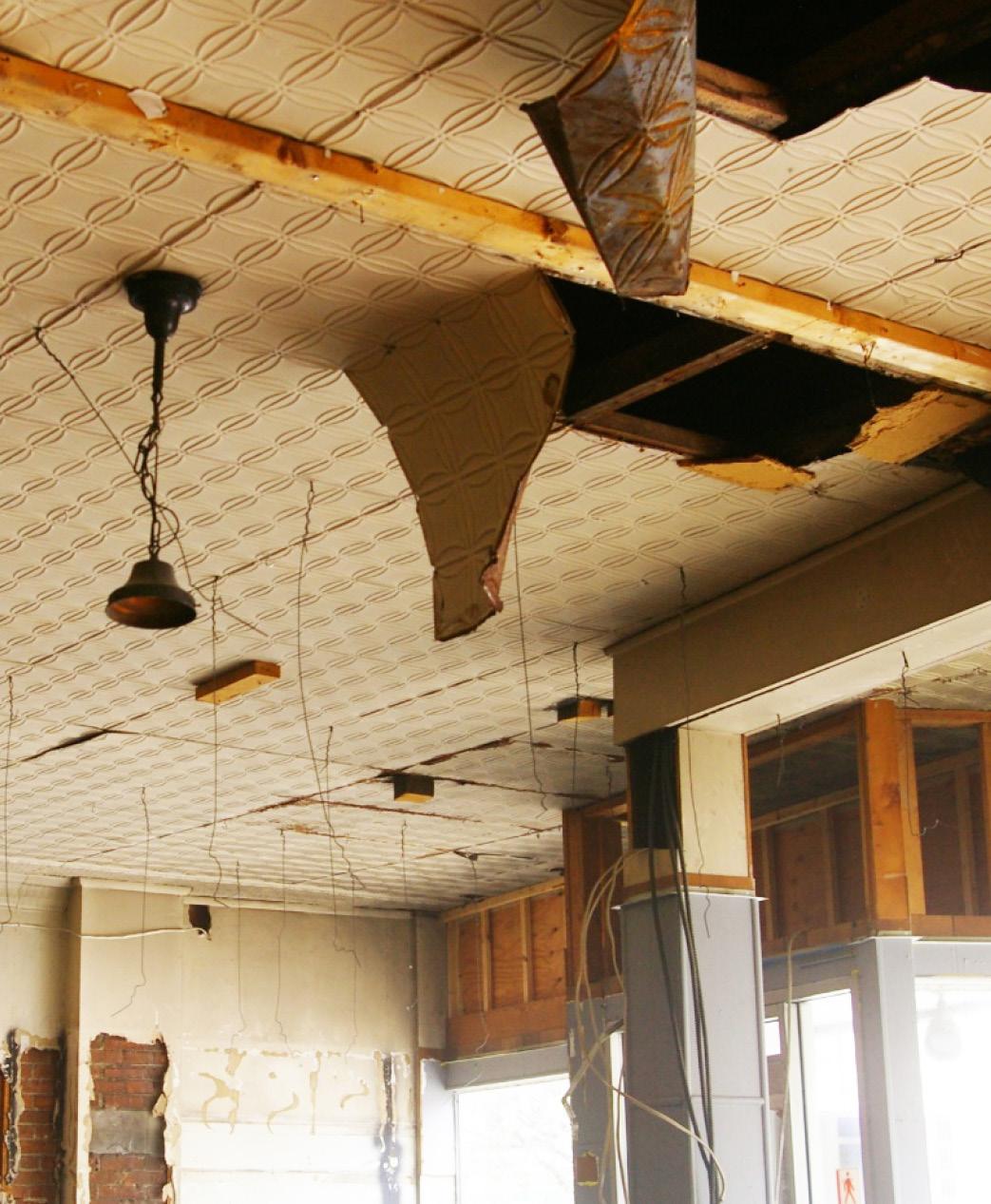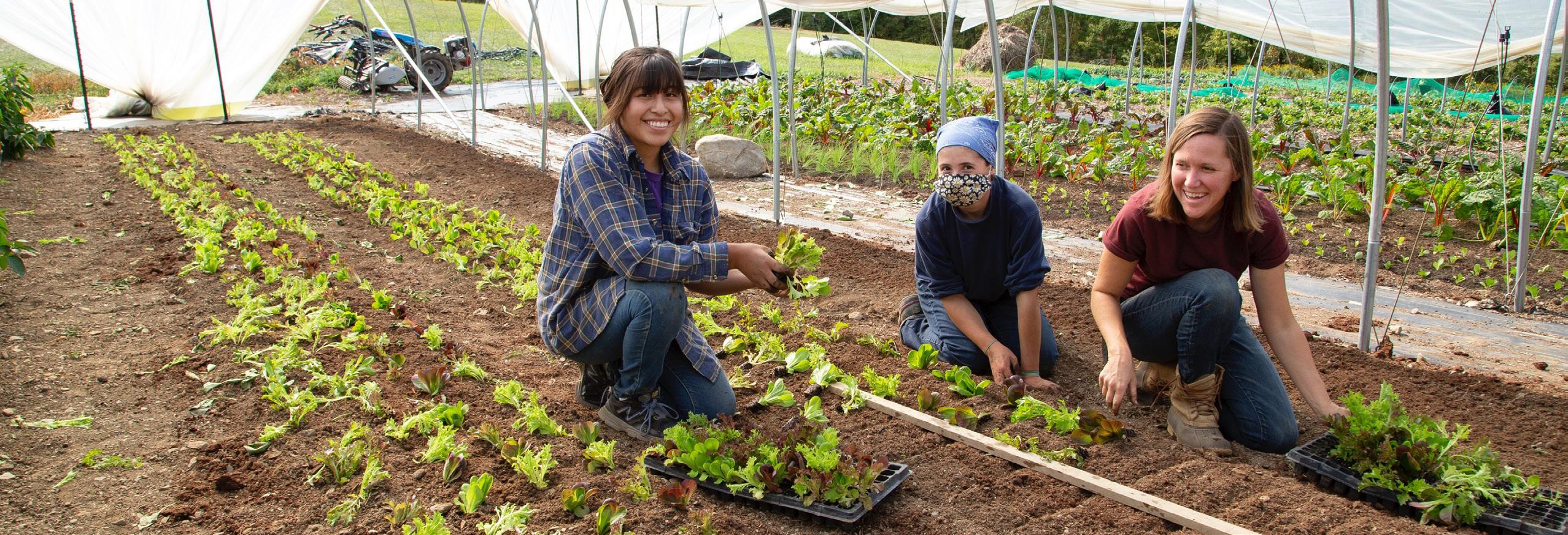




$17.88M
Currently, the Community Foundation has 44 investments totaling $17.88 million in Vermont companies and in housing and community revitalization projects. They range from a missiondriven staffing agency providing second chances to people in recovery or recently released from incarceration, to a manufacturing facility in Essex using recycled glass to reduce the carbon footprint of buildings. Investments like these create opportunities for Vermonters, particularly those who are disadvantaged by place, by race, or by economic background, and help close the divide that leaves many Vermonters struggling to build bright futures.
A portion of every fund at the Community Foundation is invested in the Vermont Mission Investment Pool. When you have a fund with us, five percent of the assets are making a difference in the community right away by investing in downtown redevelopment, affordable housing, entrepreneurship, job creation, clean energy, and more. Embedded in our asset management, these community investments work alongside grantmaking for greater collective impact—with a return that is far more than just financial.
One of the first community foundations in the country to commit a portion of its managed funds to mission investing, the Vermont Community Foundation brings over 20 years of experience to its investments along with trusted partnerships with co-investors including Community Capital of Vermont, the Flexible Capital Fund, Fresh Tracks, Northern Community Investment Corporation, Vermont Community Loan Fund, and Hula.
Mission investing—the use of invested assets to achieve impact goals—is one of the many tools the Community Foundation uses to address the opportunity gap.
“
We know that the longterm vitality of Vermont communities relies upon a strong economy. We see a role for the Foundation’s assets to foster economic resilience and the growth of good jobs, both of which are key to closing the opportunity gap. I am convinced that the ripple effect of our shared commitment to bring resources from Wall Street to Main Street will be felt across the state.
DAN SMITH, PRESIDENT & CEO, VERMONT COMMUNITY FOUNDATION
The divide that leaves too many Vermonters struggling to build bright futures no matter how hard they work
Designed to generate both financial and social returns and made in alignment with the Foundation’s mission, values, and areas of focus
Designed to generate both financial and social returns with a focus on a specific community
Investments in early-stage companies, often in exchange for equity stakes in those companies
Shares or partial ownership of a company expected to generate dividends as the company grows
Investable funds loaned with a fixed rate of return
Money pooled from multiple investors and invested in securities such as stocks, bonds, and short-term debt
How do you support people in recovery or those who were formerly incarcerated, while at the same time contributing to Vermont’s economy? Enter Working Fields, a mission-driven staffing agency that provides coaching and job-placement to individuals facing barriers to employment.
Beyond helping people find employment, Working Fields brings peer recovery coaching and connection to vital services—such as transportation and housing—to job seekers, so that they can realize their potential and be successful in their job.
“They were everywhere they needed to be to help me,” said Jessica Gaboury. “I felt like I had a shield around me. I’m going to live my best life and give my best to them, because they’re the ones who went to bat for me.”
Make no mistake, Working Fields is a value-add to the Vermont economy. They apply a humanistic and harm-reductionist approach to a tangible problem the market is facing: a state and nationwide labor shortage.
But it’s not only about giving people a second chance. Working Fields serves Vermont businesses by developing the workforce living in our community to fill vacant jobs.
The Community Foundation’s Vermont Investment Pool was an early supporter of the company and their mission to provide opportunity for successful employment and recovery. WORKINGFIELDS.COM
What began as an upcycling story—a way to recycle glass into a lightweight building material—has become a story about creating impact in the carbon-intensive built environment.
Glavel is one of two companies in the United States that produces foam glass gravel, a lightweight aggregate made from recycled glass that is used for sub-slab insulation and structural fill. Glavel serves a growing demand for green building materials, and they do it powered entirely by renewable energy.

An alternative to materials derived from or manufactured with petroleum, foam glass gravel is lighter than stone, reducing the environmental cost of transport. Glavel offers builders and project owners an opportunity to reduce the carbon footprint of new construction.
“The built environment is responsible for nearly 40 percent of greenhouse gas emissions,” said Rob Conboy, founder and CEO of Glavel. “Our product requires no petroleum-based inputs, making it one of the most environmentally-friendly products on the market.”
Glavel’s deep commitment to environmentally conscious practices and job creation, combined with its strong growth potential, makes it well-aligned with the Community Foundation’s investment strategy.
GLAVEL.COM
people placed in jobs in 2021
employer partners in Vermont and New Hampshire
75K
cubic yards produced annually
production expected in 2023
Mamava and Glavel are two of the many employers in Vermont who contract with Working Fields to find employees. The collaboration is a two-way street, offering Vermonters who are in recovery or were recently incarcerated a second chance, and developing a much-needed workforce to support economic growth.
“We’d pumped breast milk in closets, bathrooms, and cars. We’d had enough,” said Mamava co-founders, Sascha Mayer and Christine Dodson. And they had a hunch that families of the more than 3 million babies breastfed each year had probably had enough too.
As mothers and entrepreneurs with backgrounds in design and brand strategy, they created a solution—moveable lactation pods that could be placed in public spaces. The company’s first pod was delivered to the Burlington International Airport in 2013. Today there are more than 3,000 Mamava pods in all 50 states and beyond, and a free app that allows families to locate thousands of clean, safe lactation spaces.

One of Vermont’s most successful startup stories, Mamava recently brought manufacturing in-house with the acquisition of its facility in Springfield, Vermont, creating new employment opportunities in the region. The company hopes to attract more women into manufacturing roles in order to improve their ability to innovate and design with the customer in mind.
In support of a strong entrepreneurial ecosystem that fosters community economic resilience and job growth, the Vermont Community Foundation provided seed funding and additional support to Mamava through multiple rounds of fundraising.


MAMAVA.COM
3,000+
75% growth of manufacturing workforce in the first year of the Springfield facility
Community Foundation fundholders have a new opportunity to invest charitable assets into Vermont startups, fueling an entrepreneurial ecosystem, economic resilience, and job growth in Vermont.

VCF at Hula is a new venture capital fund created in partnership with Hula, a coworking space and business incubator in Burlington, Vermont focused on elevating Vermont-based technology startups and entrepreneurs.

Investments will prioritize companies generating venture returns, creating jobs in Vermont, advancing economic development, and those making positive disruption in their respective industries. The fund made its first investment in CoreMap, which developed a technology to allow physicians to visualize atrial fibrillation (an irregular and often rapid heart rhythm) and create better treatment options for their patients.
Rooted in a shared commitment to innovation, sustainable growth, and closing the opportunity gap in Vermont, any investment returns from VCF at Hula will go back into the charitable funds that participate—potentially increasing those funds’ grantmaking capacity to drive greater community impact across the state.

VCF at Hula will be capped at $3 million and is open to elective participation through December 15, 2023. Interested participants can invest in VCF at Hula by opening a Social Impact Charitable Advised Fund or making a gift to the Vermont Community Foundation’s Vermont Investment Portfolio with a minimum charitable investment of $100,000.
HULALAKESIDE.COM
CoreMap has the potential to have an enormous impact on public health. Our mission is to elevate Vermont-based companies because we believe Vermont is the ideal place to live, work, and play.
—RUSS SCULLY, THE FUND AT HULA PUTNAM BLOCK BEFORE PUTNAM BLOCK AFTER Photo courtesy of Putnam Block Photo courtesy of Putnam Block Photo courtesy of High Mowing SeedsDowntown revitalization is a buzzy term that can be difficult to define. How does a community bring economic vitality, culture, art, great food, well-paying jobs, and affordable housing back to Main Street?
The Putnam Block in Bennington demonstrates the vision, dedication, and funding that came together to not only renovate three historic buildings in the heart of downtown, but also to ignite momentum, optimism, and a sense of pride in one of Vermont’s most important economic centers.
It began with the Bennington Redevelopment Group in 2016, a group of business leaders, institutions, and civic-minded investors determined to redevelop the Putnam Block. Today, residents and visitors flow in and out of the bookstore and local restaurants; Bennington College and Southwestern Medical Center have taken space on the first floor; and plans to move into phases two and three are moving forward.
“We love living downtown,” say Tony and Jackie Marro, new Putnam Block residents. “We like being able to walk to the post office, the library, the book shop, the Coffee Bar, and a dozen local breweries and restaurants.”
An early investor in the Putnam Block, the Vermont Community Foundation purchased $500,000 in preferred equity in alignment with its goal of place-based investments that help to close the opportunity gap.
PUTNAMBLOCK.COM
This is not an investment in a building, or even in a project—it’s an investment in Bennington.
DAN SMITH, PRESIDENT & CEO, VERMONT COMMUNITY FOUNDATION78K square feet of residential, retail, and office space
12 affordable housing units
Sales growth of 300 percent might seem like a dream come true, but for High Mowing Seeds, the spike in sales following stay-at-home orders in the spring of 2020— already a busy time for the company—was as much a problem as it was an opportunity.
High Mowing was among the many companies that pivoted during the pandemic, prioritizing sales to farmers, and making investments in software, facilities, salaries, and staffing to meet demand. Unlike some businesses for whom business is back to normal, however, the trend toward growing your own food has held.

One of the Northeast Kingdom’s most important employers, and the only company in the U.S. that sells more than 700 varieties of organic, certified non-GMO seeds, the company is committed to seeding healthy food systems around the globe. In addition to donating 12,000 pounds of produce from their vegetable trials field last year, the company also provided farm-to-school programs, seed libraries, food banks, and disaster relief efforts with more than 100,000 packets of seeds.
The Vermont Community Foundation’s investment into High Mowing Seeds helped the company purchase a new business management software system, positioning the company for continued growth. High Mowing Seeds is well-poised to further their mission of rebuilding food systems that support health on all levels—healthy environments, healthy economies, healthy communities, and healthy bodies.
300% growth in sales during the early months of the pandemic
full time and seasonal employees
Want to PARTNER WITH US?
Ready to OPEN A FUND?
Want to SPEAK WITH A PHILANTHROPIC ADVISOR to learn more?

CONTACT US: philanthropy@vermontcf.org 802-388-3355 opt. 5
The Vermont Community Foundation 3 Court Street Middlebury, VT 05753 vermontcf.org